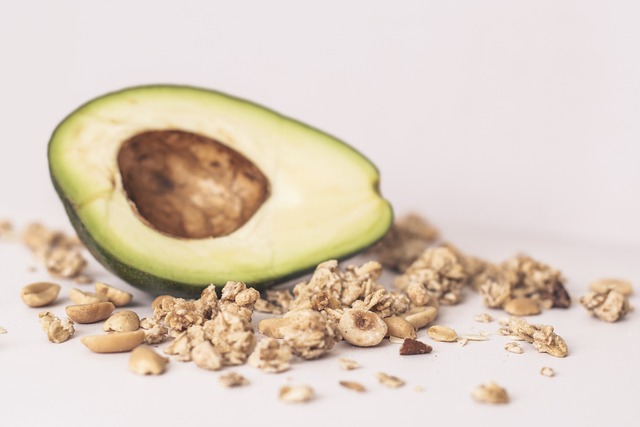
The main concept of a Keto diet is to eat foods that are high in fat and low in carbohydrates. People who follow this diet can include a range of animal proteins, dairy, vegetables, other plant-based foods, and fats and oils. The growing popularity of the ketogenic diet can be attributed to its potential advantages in terms of weight loss and blood sugar management.
In addition, preliminary evidence indicates that the low carb, high fat diet may have potential in treating specific types of cancer, Alzheimer’s disease, and other health conditions. However, further high-quality research is required to ascertain the long-term safety and efficacy of the ketogenic diet.
The typical carbohydrate limit for the keto diet is between 20 and 50 grams per day. While some individuals who follow this diet track their overall carbohydrate consumption, others keep count of net carbs. Net carbs are calculated by subtracting the amount of fiber from the total carbohydrates. This is due to the fact that fiber cannot be broken down and absorbed by the body.
Although it may appear difficult, this diet enables individuals who adhere to it to consume numerous wholesome foods. Here are some nutritious foods to eat on the keto diet.
1. Seafood
Fish and shellfish are considered highly compatible with the keto diet due to their low carbohydrate content. Aside from being almost carb-free, salmon and other types of fish are also packed with B vitamins, potassium, and selenium.
The carb content in shellfish differs depending on the type. Shrimp and most crabs have zero carbs, but oysters and octopus do contain carbs. Despite this, you can still include these foods in your keto diet as long as you monitor and control your carb intake appropriately.
In addition, individuals who are overweight or have obesity have been linked to decreased insulin levels and enhanced insulin sensitivity after consuming omega-3 fats found in fatty fish such as salmon, sardines, and mackerel.
The American Heart Association suggests that adults over 18 years old should consume 8–10 ounces of seafood per week as it is associated with enhanced brain health and reduced risk of disease.
2. Meat and poultry
Meat and poultry are regarded as essential foods in the keto diet.
Fresh meat and poultry are abundant in B vitamins and various essential minerals, and they do not contain any carbohydrates. Additionally, they serve as an excellent source of superior protein that can aid in preserving muscle mass while following a diet with extremely low carbohydrate intake.
In a study involving older women, it was discovered that consuming a diet rich in fatty meat resulted in an increase of 8% in HDL (beneficial) cholesterol levels as compared to a low-fat, high carbohydrate diet. If feasible, opting for grass-fed meat may be preferable because it contains higher amounts of omega-3 fats and conjugated linoleic acid (CLA) in comparison to meat sourced from grain-fed animals.
3. Eggs
Eggs can be an excellent protein source that is highly nutritious, particularly for the keto diet, due to their low carb content of less than 1 gram per large egg and their protein content of approximately 6 grams.
Moreover, studies have indicated that eggs can stimulate the production of hormones that enhance sensations of satiety. Therefore, consuming whole eggs is crucial as they hold the majority of an egg’s essential nutrients within the yolk. These nutrients encompass lutein and zeaxanthin, potent antioxidants that safeguard the health of our eyes.
Despite the fact that egg yolks are high in cholesterol, they do not seem to elevate the likelihood of heart disease.
4. Cheese
There are many varieties of cheese, most of which are high in fat and have a low carb content, making them suitable for the keto diet. A single ounce (28 grams) of cheddar cheese contains 1 gram of carbs, 6 grams of protein, and a decent amount of calcium.
Although cheese is rich in saturated fat, there is no evidence indicating that it can elevate the chances of developing heart disease. In reality, certain studies propose that it might actually provide protection against this ailment. Additionally, cheese includes CLA, which is associated with the reduction of fat and enhancements in the body’s overall structure.
In addition, the consumption of cheese on a regular basis may assist in reducing the decline of muscle mass and strength that typically accompanies the aging process. A study conducted over a period of 12 weeks on elderly individuals concluded that individuals who consumed 7 ounces (210 grams) of ricotta cheese per day exhibited a lesser extent of muscle mass and muscle strength deterioration compared to those who did not consume this amount of cheese.
Below are several cheeses that have reduced carbohydrate content and are therefore suitable for individuals following a keto diet.
Keto cheese list
- blue cheese
- Brie
- Camembert
- cheddar
- chevre
- Colby jack
- cottage cheese
- cream cheese
- feta
- goat cheese
- halloumi
- Havarti
- Limburger
- Manchego
- mascarpone
- mozzarella
- Muenster
- Parmesan
- pepper jack
- provolone
- Romano
- string cheese
- Swiss cheese
5. Plain Greek yogurt and cottage cheese
Plain Greek yogurt and cottage cheese are nutrient-rich foods that provide a high amount of protein. Although they do contain some carbohydrates, they can be consumed in moderate amounts if adhering to the keto diet. Studies have demonstrated that both yogurt and cottage cheese can contribute to reducing hunger and generating a sensation of satiety.
Both a single one of them is delicious as a snack on its own, however, you have the option to mix them with chopped nuts, cinnamon, or other spices in order to create a fast keto treat.
6. Avocado
When considering a keto diet, avocados are an ideal and healthful option because they provide 1.9g of protein, 1.9g of carbohydrates, and 19.7g of fat per 100g. Additionally, they serve as a valuable source of significant nutrients such as potassium, calcium, magnesium, and B vitamins.
Avocado recipes in the style of the keto diet:
- Cod with cucumber, avocado & mango salsa salad
- Prawn, avocado & cucumber salad
- Chilli avocado
7. Coconut oil
Coconut oil is an essential component of the keto diet since it consists entirely of fat. The type of fat present in coconut oil is referred to as medium-chain triglycerides (MCTs), which are promptly converted to ketones and utilized by the liver for energy.
The effectiveness of coconut oil as a component of a keto diet has been proven to raise ketone levels in individuals with Alzheimer’s disease. Additionally, its primary fatty acid, lauric acid, along with MCTs, may offer a consistent state of ketosis when consumed.
Ways to add coconut oil as part of a keto-diet include:
- Coconut oil can be used to replace most cooking oils in dishes such as stir-fries and curries.
- Add to a smoothie or stir into your coffee
- Fry your eggs in coconut oil
8. Olive oil
Olive oil, which is predominantly composed of fat, contains 99.9% fat. The fat content consists mainly of oleic acid, a monounsaturated fat known to promote cardiovascular health and lower the likelihood of heart disease. Adding olive oil to a keto diet is effortless and convenient as it can be effortlessly poured over meals, utilized in keto-friendly dressings, and incorporated into mayonnaise.
Use extra virgin olive oil whenever possible due to its natural richness in monounsaturated fats and antioxidants. Consider preparing your own watercress mayonnaise to enjoy with salmon, or opt for a tarragon & mustard mayonnaise to perfectly complement chicken.
9. Nuts and seeds
It is not surprising that nuts and seeds are considered a top food for a keto diet due to their natural qualities of being high in fat and protein while being low in carbohydrates.
- 100g of almonds contain 16.7g of fat, 8.7g of protein and just 2.1g of carbohydrates
- 100g of walnuts contain 20.6g of fat, 4.4g of protein and just 1g of carbohydrates
- 100g of pumpkin seeds contain 4.6g of fat, 3.3g of protein and 1.5g of carbohydrates
Nuts and seeds are additionally an excellent source of fiber, which aids in prolonging the feeling of fullness.
Easy ways to add more nuts and seeds to your keto diet include:
- Sprinkle them over your lunch or dinner
- Add them to a smoothie
- Put some in a small bowl and have as snack
- Use nut or seed butters
You have the option of creating a spicy seed mix or attempting to make your own pumpkin seed butter.
10. Berries
Berries, unlike most fruits that are high in carbohydrates, are an exception on ketogenic diets due to their lower carbohydrate content and higher fiber content, which contributes to prolonged satiety. Additionally, berries serve as an excellent source of crucial antioxidants necessary to prevent oxidative stress and maintain cell integrity.
Incorporating berries into a keto diet involves considering recipe ideas.
- Berry omelette
- Berry yogurt pots
- Fruit leather
11. Butter and cream
These dairy products high in fat content can be seamlessly incorporated into a daily ketogenic diet due to their low carbohydrate content and abundant conjugated linoleic acid, which potentially aids in reducing body fat.
- 100g of butter contains 0.6g of protein, 82.2g of fat and 0.6 g of carbohydrates
- 100g of double cream contains 1.6g of protein, 53.7g of fat and 1.7g of carbohydrates
- 100g of single cream contains 3.3g of protein, 19.1g of fat and 2.2g of carbohydrates.
Ways to add more butter or cream to your diet include:
- Adding it to your coffee
- Adding it in a smoothie
- Cook your eggs, fish and meats in butter
- Make scrambled eggs with cream
12. Green leafy vegetables
Leafy green vegetables are a superb choice for the keto diet due to their extremely low carbohydrate content. Additionally, they offer ample amounts of vitamins, minerals, and antioxidants. More specifically, dark leafy greens such as spinach, kale, and collard greens are abundant sources of vitamin K and iron.
Including leafy greens in your meals helps to increase bulk without a significant increase in carbohydrates. Moreover, herbs like oregano and rosemary provide plenty of flavor with minimal carb content. Here are a few examples of leafy greens that are suitable for a keto diet.
- Salad greens: lettuce, baby spinach, arugula, escarole, and frisee
- Cooking greens: bok choy, collard greens, mustard greens, kale, spinach, Swiss chard, and cabbage
- Herbs: thyme, sage, mint, oregano, dill, parsley, cilantro, basil, rosemary, and lemongrass
13. Summer squash
Summer squashes, including yellow squash and zucchini, possess great versatility and are also low in carbohydrates. Zucchini, specifically, is highly favored in keto diets. By employing a spiralizer, zucchini can be transformed into noodles which serve as a superb alternative to traditional pasta or noodles.
Zucchini can be grated to create a rice substitute or incorporated into baked goods without changing the taste. Alternatively, it can be thinly sliced using a mandoline and mixed with olive oil, salt, and pepper to create a refreshing cold salad.



